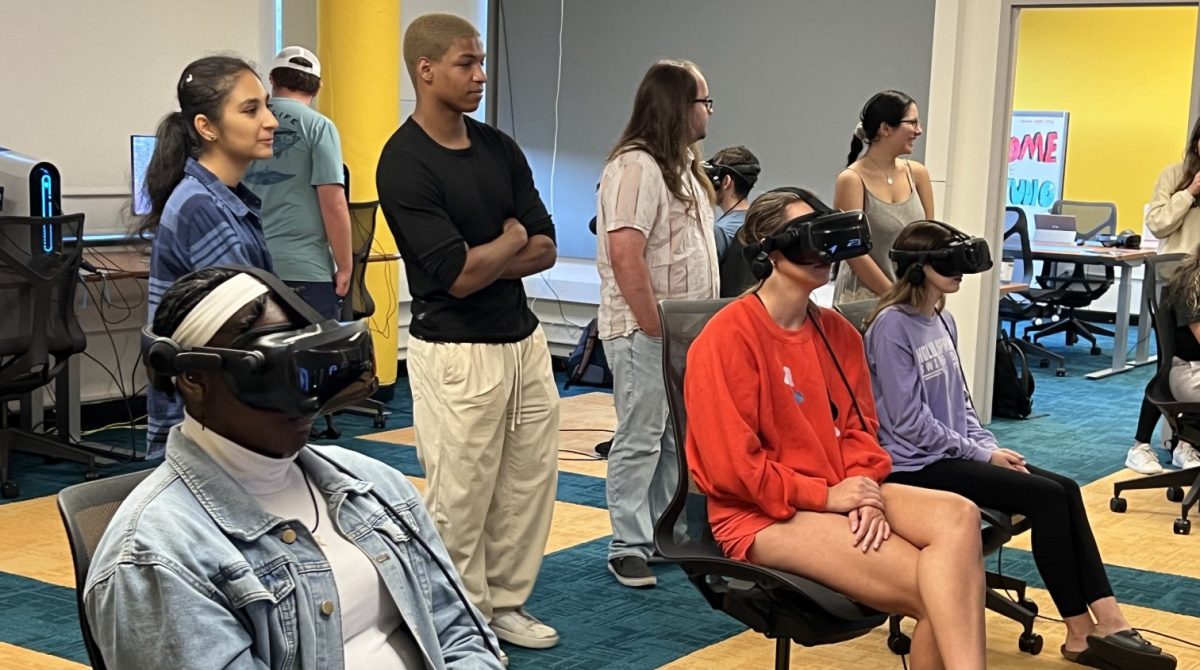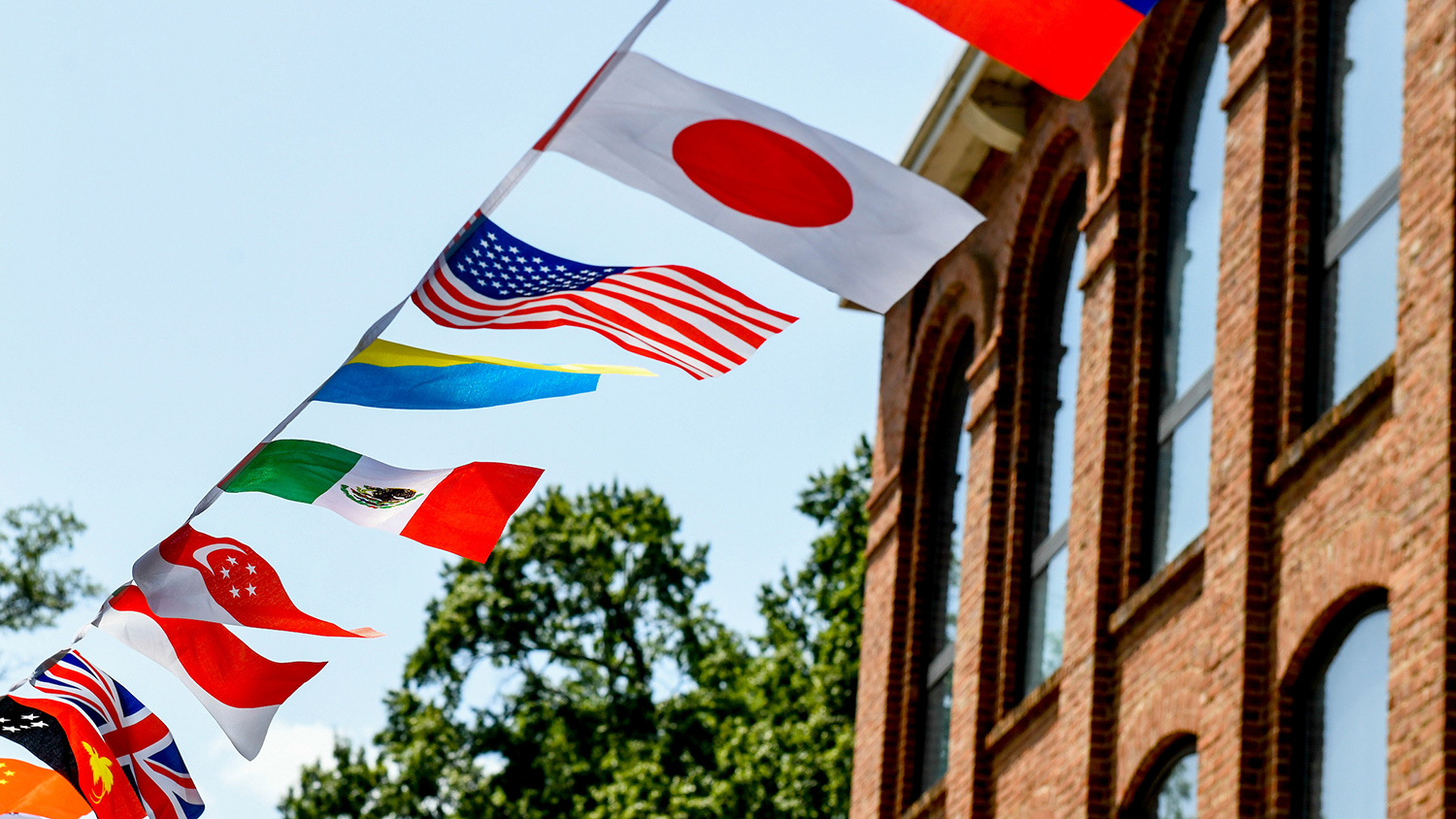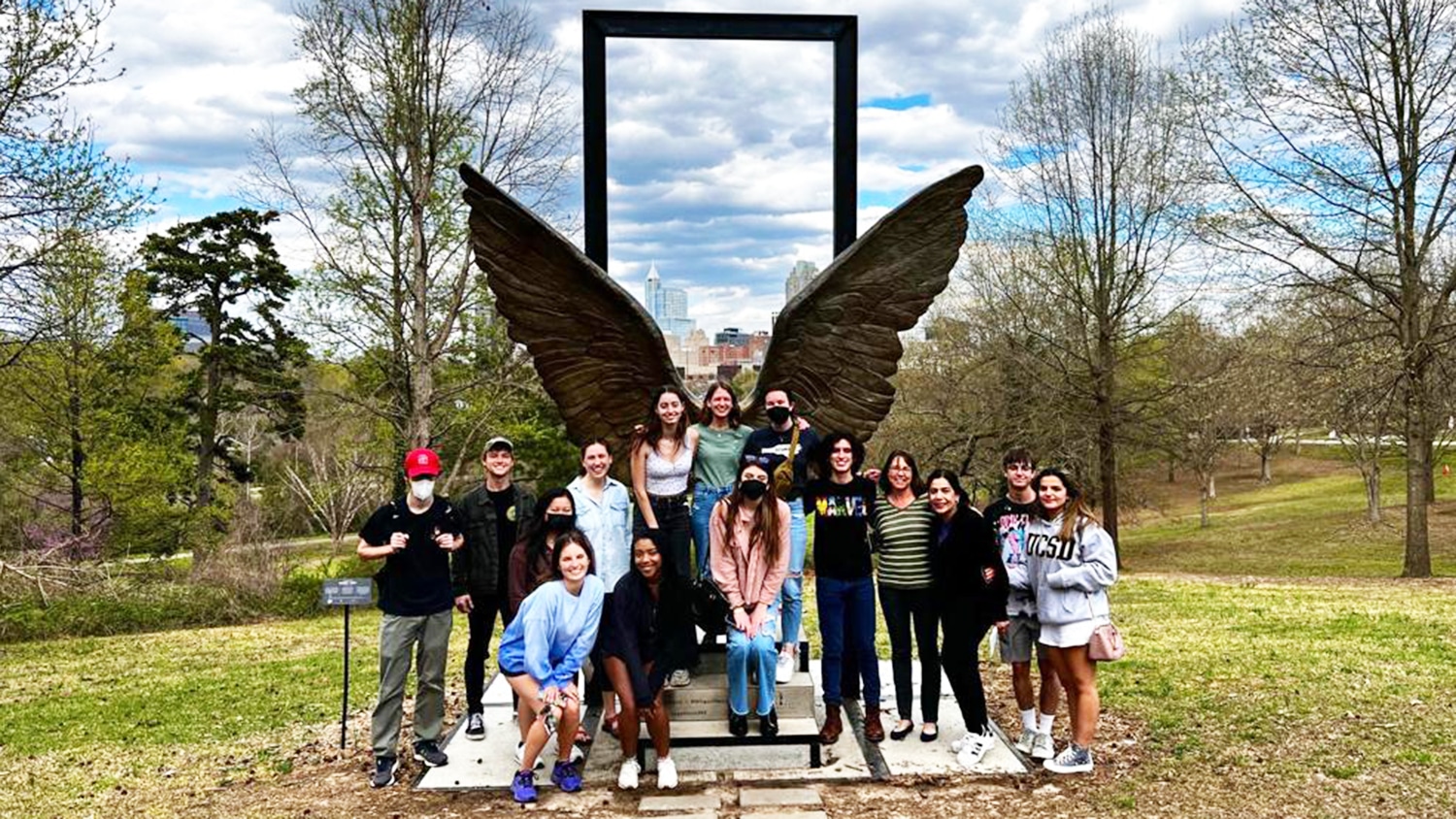Language Expert Gives Students the Virtual Reality Experience

Nilakshi Phukan, associate teaching professor and advocate for STEM/VR technology integration in the Department of World Languages and Cultures at NC State, brought her students to the VR labs in D.H. Hill Library to provide them with a firsthand digital experience of cultural dances, theater, and events that have already happened, exploring Hindi-Urdu languages, literatures and South Asian cultures. Phukan gave a lecture after the VR experience to tie together what the students learned and the bigger picture of understanding how we teach and learn.
The lecture mirrored the experience that Phukan curated for them through the VR goggles, which aims to integrate humanities disciplines integrated into new and innovative STEM technologies. The experience in the lab felt surreal; the viewer stands in the middle of a dance floor watching dozens of people dance all around them at the Garba Dance Festival. The viewer is then transported to a theatre where they sit in the audience and watch as the famous epic called “Ramayana – Ravan Dahan” is performed. The most popular experience among the students was standing next to the professor in a marketplace in Delhi, India. The viewer watches Phukan converse with the shopkeeper as her son scurries around, and we see the beautiful jewelries laid out on the table. It’s odd to say, but it felt like experiencing India in an incomplete, but very real, sense.
It was a theme among student answers that the VR headsets made them feel like they had experienced culture, and students made suggestions to the professor about other things she could record that they would like to experience, such as different kinds of shops, religious spaces, and inside people’s houses and everyday lives.
When I asked one of the many insightful students, Marina Khan, how this is useful in learning she said, “I’m a very visual learner, so I need to see something to be able to understand and apply it. [With the headsets] you get the feeling like you are there, it’s similar to it happening in front of you,” Marina explained after she went through the VR lab, “I could see this being beneficial to someone doing graphic designing, interior designing, engineers…this could work for anyone.”
The possibilities for the use of VR in language and communication departments are so obvious now after experiencing it. In language classes, educators teach you what culturally-based language is and how you need to understand the culture to understand the language, and VR provides such a unique firsthand digital experience of culture so people can learn in real time, instead of relying so heavily on conceptual learning.
Marina made another interesting comment about one of the overlooked benefits of virtual reality in a learning environment. “I can see how this removes distraction. Once you put it on you can’t look at your phone, you’re not exposed to external things and your eyes can’t do anything but watch. So, in a way, it makes you inclined to pay attention to what’s there. It’s more interesting than a video. If I had an option to watch this on YouTube or a VR headset I would pick the headset, it’s just fun.”
Given that younger generations who are technological natives might struggle with attention span, this comment has a lot of implications about using this and other learning technologies to reengage students and capture their attention for learning in educational settings.
In Phukan’s lecture, she went into teaching philosophy and the importance of cross- discipline integration in academic settings. She told her class, “It’s time for Humanities sectors to step forward and mingle with STEM programs. Just like in Asian philosophy, every particle of this universe has its own identity and all have to come together to create unity, to create gravitational power.”
Students were asked to provide an evaluation after their first experience with VR where they answered the question, “why is it important for humanities courses to adopt STEM innovations like virtual reality modules?” Here are two of the students’ responses.
Nikita Nagendra, a life science student wrote, “Although VR is traditionally used in STEM, I think that it’s important to use it in the humanities as well to create a more immersive cultural experience. VR allows students to experience new countries, sights, sounds and languages, which cannot be taught in a classroom. By expanding VR to the humanities, it lets students learn better and gain a deeper understanding of the culture they are observing.”
Communication student Alexandra Vazquez wrote, “It is important for the humanities to adapt to STEM innovations and technologies, as it will help people gain a better understanding of the disciplines. When we think of the humanities a lot of times we think of reading and analyzing literature, but the humanities are more than that. The humanities look at all types of media, settings, objects and symbols, and dives deeper into the significance and messages through a critical lens. I believe that adopting STEM innovations will not only expand people’s knowledge of the humanities, but get people interested in humanities courses.”
- Categories:

